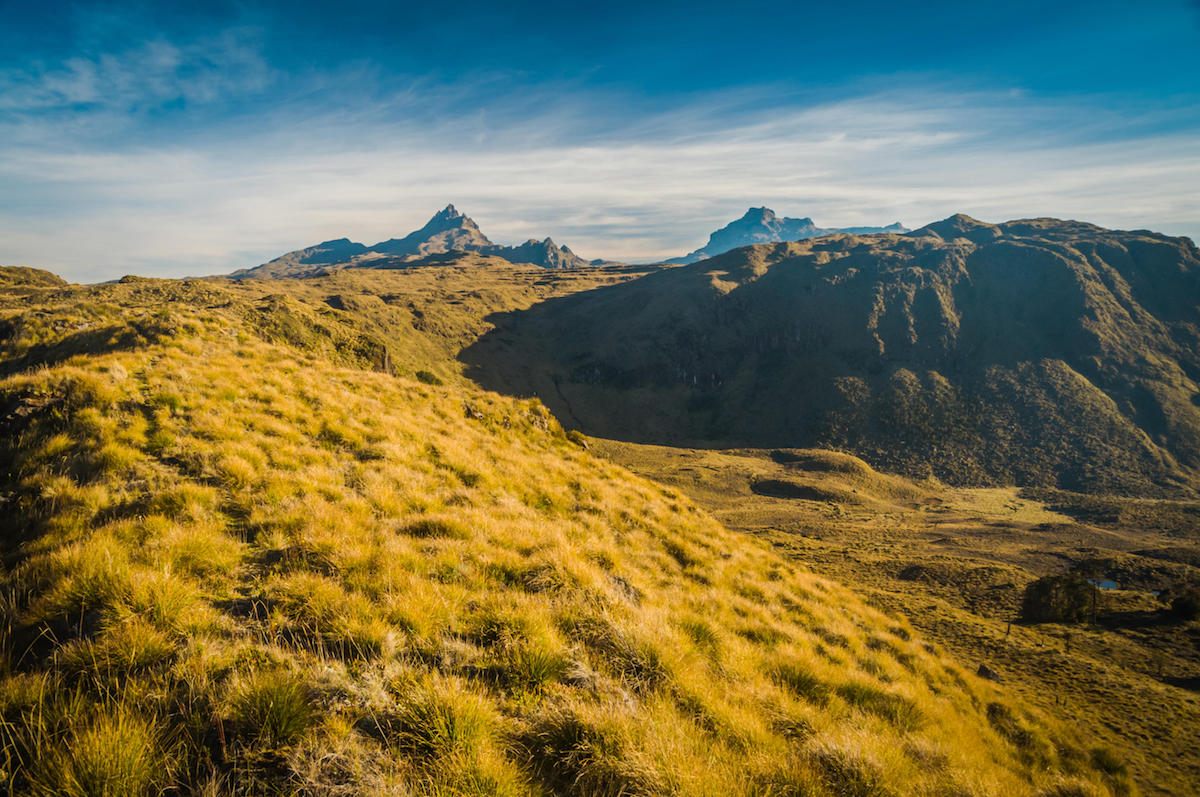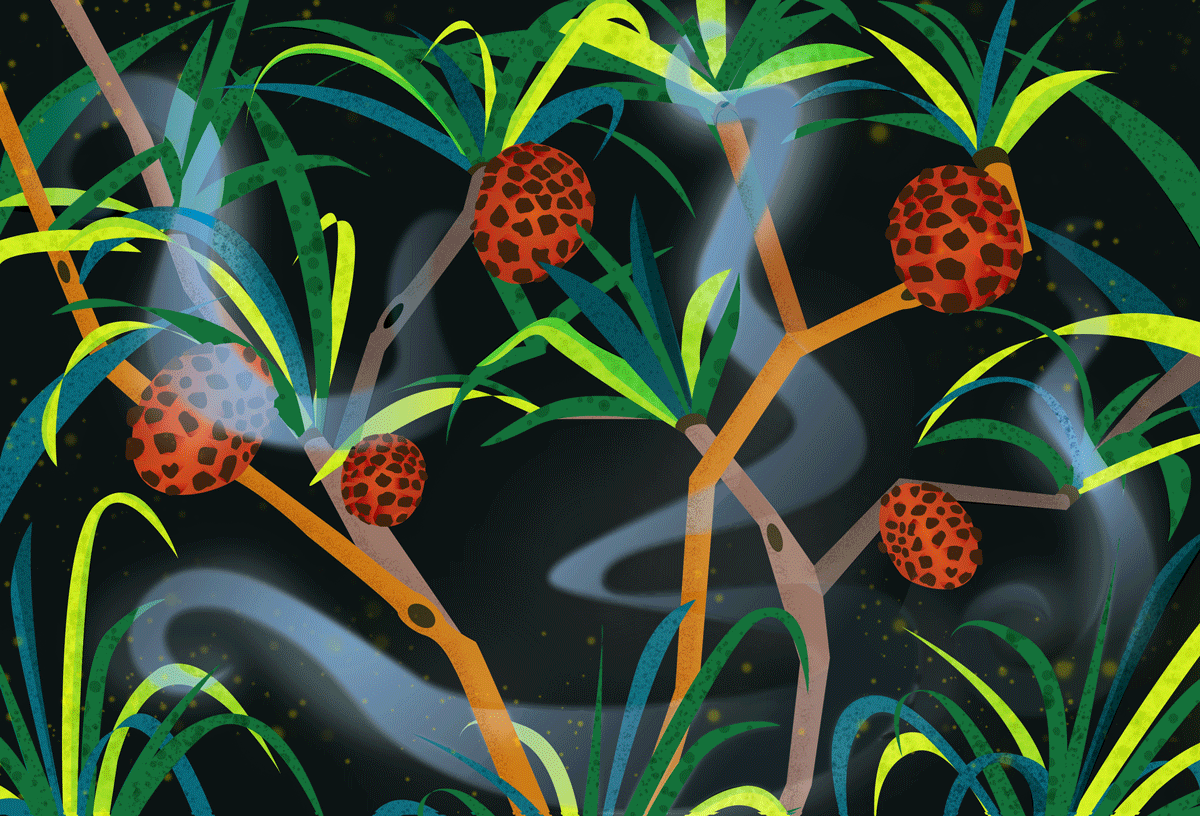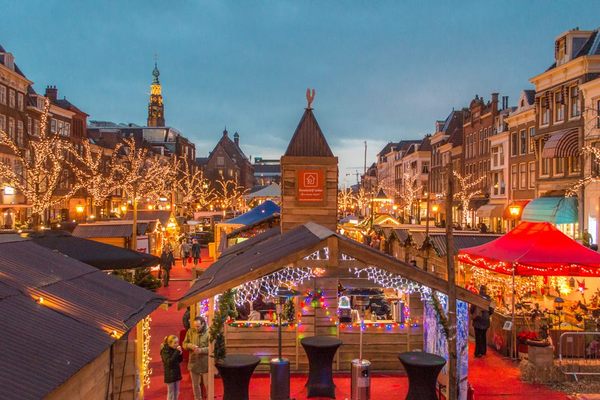This Language Is Only Used When Collecting Nuts in New Guinea
Pandanus talk is believed to shoo away spirits and keep the harvest from harm.
A chain of mountains splits the center of Papua New Guinea, crossing east to west for nearly a thousand miles. These highlands are full of peaks and V-shaped valleys, covered in forest and hard to reach—a terrain that has isolated clans for millennia, leading to the country’s famously diverse languages and cultures.
On these mountains grow the pandanus tree, up to 90 feet tall and bearing clusters of knobbly, pineapple-like fruits; eaten raw or cooked, they taste a little like pecans. This dense, high-fat nut is preserved during famine, smashed into pudding, consumed during ceremonies, and connected to the earliest signs of humanity in Papua New Guinea. As far back as the Ice Age, residents were leaving the coasts to trek into the mountains to harvest them. Over time, the harvesting expeditions took on ritual significance, and spurred the development of a hidden form of language.
On pandanus-gathering expeditions, ordinary words cannot be spoken. Instead, people use pandanus talk. It is not a language of its own like Russian or Mandarin, but a style of language used in a special context, or what linguists call a “register.” Across Papua New Guinea, different clans with different languages all switch up their speech when they gather pandanus, lest they risk harming the harvest.

Back when Karl Franklin lived near Mount Giluwe, the second-highest mountain in Papua New Guinea, the surrounding area was believed to be inhabited by wild dogs. Franklin, a now-retired American linguist, first traveled to Papua New Guinea in 1958 to help catalog the local languages. He and his wife lived in a village with the Kewa people, five hours from the nearest government station. Franklin would spend the next few decades creating an alphabet for Kewa (then solely an oral language) and, eventually, compiling a dictionary.
Each year when winter came around, the Kewa went up into Mount Giluwe for weeks at a time to gather pandanus. “One day, somebody told me about this language they used when harvesting the nuts so that the spirits wouldn’t bother them,” says Franklin. The spirit in question was Kita-Meda, keeper of the wild dogs of the mountain. Kita-Meda wore “a long string of mother-of-pearl shells hanging from his neck” and was easily hidden by leaves.
Make no mistake, he was dangerous, capable of ripping people apart—and so certainly capable of derailing a pandanus harvest. Protection was necessary. Kita-Meda might understand Kewa, but he did not understand the pandanus language. Avoid the ordinary words and the spirit, and his unwanted attention, would stay away.
Franklin was already interested in Kewa language taboos—when people died or married, you could no longer use their original names—and this was another intriguing form. He managed to get a helicopter to take him closer to the mountain, normally a day’s walk away, to interview more residents and confirm the existence of this secret language.
The grammar of pandanus language is the same as standard Kewa, according to Franklin, but the vocabulary switches. Repena means both tree and fire in standard Kewa, but in pandanus talk, the same objects are called palaa. Other times, the same word is used, but the meaning changes. Keraa indicates a bush in standard Kewa; up in the mountains, keraa refers to birds, flying foxes, or any type of winged object. Maeya means “crazy” in standard Kewa, then “pig” or “marsupial” in the pandanus language.
“When you go up into the forest, or in any area that’s unknown, you don’t talk a lot,” says Franklin. “It’s a fairly limited register for the Kewa, mostly objects they wanted to refer to, or the phrases most commonly used. It’s functional language for surviving in the mountains.”
Spirits aren’t the concern for the Kalam, another clan that uses pandanus talk. They, too, gather the nut and they, too, prohibit ordinary language from being spoken during the harvesting. This time, the change isn’t to appease Kita-Meda, but to protect the quality of the nuts themselves.
The Kalam language is very different from English, explains Andrew Pawley, a linguist at Australian National University who co-wrote a dictionary of Kalam. Kalam has five vowels, many consonants, and a very limited number of verbs that can be strung together to create more verbs. The word for “massage,” Pawley tells me, is made up of the individual verbs for “rub touch come go-up touch go-down do.” It’s not uncommon to squeeze eight or nine verbs together.
In Kewa, a fairly small group of words change, but almost all words in ordinary Kalam have a pandanus equivalent. “The forest is a wild place,” wrote Pawley in his paper on pandanus language among the Kalam, “and the ordinary names of objects that belong to the civilized world below are antithetical to it and should not be mentioned.” So the logic goes: Because the nuts are not from an ordinary place, exposing them to ordinary language causes harm. Words relating to moisture would make the nuts too watery, so any talk of sweat or water or the body or anything that could possibly be moist are banned. One can’t speak of things sour or bitter or hollow or empty or cold because that might make the nut sour or bitter or hollow, too. The house, the garden, animals, weather, coldness—seemingly all the words of ordinary life are taboo.
In Kalam, the differences between ordinary language and pandanus language seem stark. In ordinary language, “the bird has laid eggs” is “yakt magi ki-p.” In pandanus language, it is “wjblp mdup yok-p.”
“We are eating bananas” is “kañm ñb-sp-un” in ordinary language, but the same phrase becomes “sml ñab g-sp-un” in pandanus language.
What about the phrase “you musn’t use bad language”? In ordinary language: Mnm tmey ma-g-n-mn. In pandanus language: Laj mayab ma-tgom-n-mn.
One other occasion requires pandanus language, one that has nothing to do with nuts and everything to do with a special animal: the cassowary. In Kalam myth, the cassowary is a cousin of the human; even in ordinary language, they are not classified as birds, but inhabit their own category. This doesn’t prevent the animals from being eaten, but the cooking and the consumption must be done in a particular way, using a process that does not allow for the words of the everyday.

The exact origins of pandanus talk are a mystery, but it’s far simpler to understand why it developed.
Pawley says it’s a form of magic, a way of influencing the outcome. “Human beings are superstitious everywhere,” he says. “In the Western world, Christians pray to God for a good harvest or a safe journey, and other cultures have different ways of using magic to control the world.” Franklin adds that the language is also used to mark territory. As long as Mount Giluwe is considered dangerous for those who don’t know the language, outsiders fear to trespass.
It could be a form of art, too, says anthropologist Laurence Goldman, who studied Papua New Guinea’s Huli people in the 1970s. Like the Kewa and Kalam, the Huli have a forest language for gathering pandanus and tricking spirits. But they also have a register used specifically for spells, a register for sacred religious places, and another one for songs. In songs, for example, instead of using the ordinary word for “cloud,” one of six different words is substituted. All these registers are a way for the Huli to channel their creative impulses, according to Goldman. “It’s the commonalities between people that I think is interesting, and we have different registers all over the world for different purposes,” he says. “Think about changing words when we talk to babies, like saying ‘choo choo’ instead of ‘train.’ This all is an example of human beings doing that in different contexts: to communicate, to create culture, to indulge our need for art and play.”
Gastro Obscura covers the world’s most wondrous food and drink.
Sign up for our regular newsletter.


























Follow us on Twitter to get the latest on the world's hidden wonders.
Like us on Facebook to get the latest on the world's hidden wonders.
Follow us on Twitter Like us on Facebook